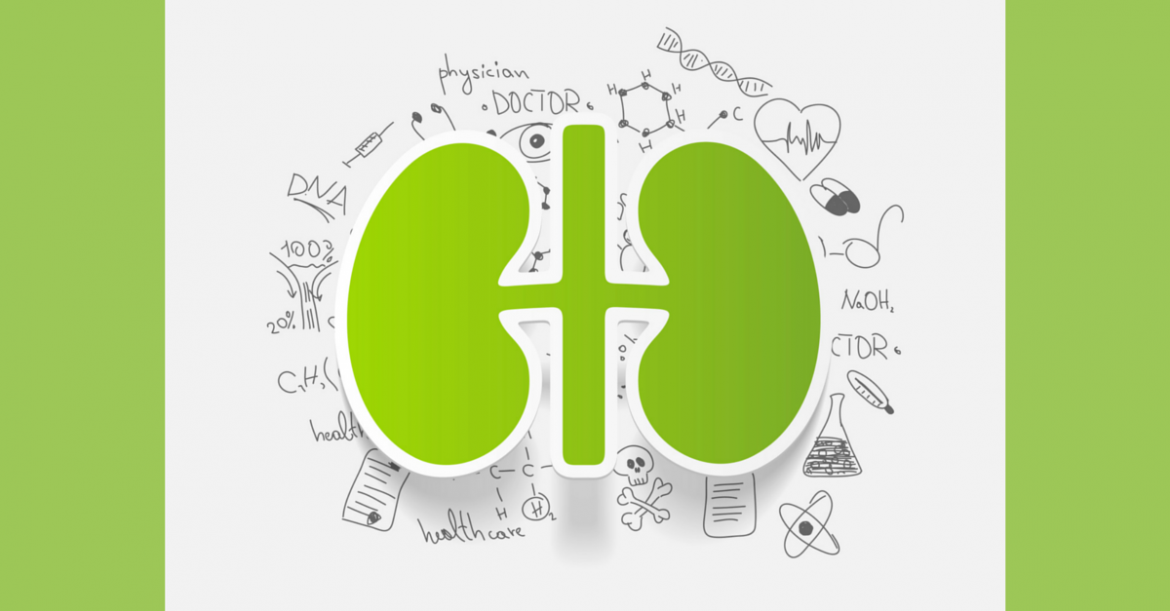One in three Americans will succumb to kidney disease because of high blood pressure, diabetes, or a family history of the disease, according to Kerry Willis, M.D., senior vice president of the National Kidney Foundation, New York, N. Y.
Each day, the two kidneys filter two liters of toxins, waste, and water via urine.
“Through this process, the kidneys regulate body fluid levels, produce red blood cells, and help to maintain healthy bones,” Willis said.
You can reduce your risk of kidney damage by adopting the National Kidney Foundation’s six tips for preventing kidney failure.
1. Get Tested with These Simple Tests
a. A urine test for albumin, which is a protein that is an early sign of kidney damage. When there is too much protein, it means the kidney’s filters have been damaged.
b. A blood test for creatiinine. This is a waste product from muscle metabolism The test reflects how well the kidneys are filtering waste products from the blood.
2. Control Blood Pressure and Blood Sugar Levels
The kidneys contain many blood vessels, and pre-hypertension (high blood pressure) and pre-diabetes can damage the kidneys.
3. Maintain a Healthy Weight
Being overweight means the kidneys have to work harder to filter toxins, as well as meet the metabolic demands of excess weight.
4. Don’t Smoke
Smoking can worsen kidney disease as well as diseases that damage the kidneys, such as high blood pressure and diabetes.
5. Exercise and Watch What You Eat
Incorporating physical activity and eating healthful foods can reduce the risk of kidney damage.
Reduce salt intake, and be aware of the high sodium content of processed foods.
6, Be Cautious of Pain Medications
Many prescribed and over-the-counter drugs are filtered by the kidneys. Read labels and be aware of the benefits and risks of these medications.
Avoid medications that can harm the kidneys, such as ibuprofen and naproxen, which is also Aleve, Anaprox, and Naprosyn.
What Are the Symptoms?
Kidney disease usually develops over time, explained the Mayo Clinic, Rochester, Minnesota. End-stage kidney failure is fatal, unless the patient undergoes artificial filtering (dialysis) or a kidney transplant.
Here are early warning signs:
1. Nausea.
2. Vomiting.
3. Loss of appetite.
4. Fatigue an weakness.
5. Sleep problems
6. Changes in urine output.
7. Decrease in mental awareness.
8. Muscle twitches and cramps.
9. Hiccups.
10. Swelling of feet and ankles.
11. Persistent itching.
12. Chest pain, especially if fluid builds up around the lining of the heart.
13. Shortness of breath, if fluids build up in the lungs.
14. High blood pressure that is difficult to control.
What Are the Causes?
Symptoms of kidney disease may actually be caused by other illnesses, the Mayo Clinic continued. It is essential to check out any warning signs with your doctor. These are typical causes:
1. Type 1 or Type 2 diabetes.
2. High blood pressure.
3. Glomerulitis or inflammation of the glomeruli, the kidney’s filtering units.
4. Interstitiual nephritis, an inflammation of kidney tubules.
5. Polycystic kidney disease, or the formation of many cysts.
6. Prolonged obstruction of the urinary tract, such as an enlarged prostate, kidney stones, or cancer.
7. Vesicoureteral reflux, which causes urine to back up into the kidneys.
8. A recurring infection in the kidneys.
What Are the Complications?
1. Fluid retention.
2. Rise in potassium levels, which can damage the heart.
3. Cerebrovascular disease.
4, Risk of bone fractures.
‘ 5. Anemia.
6. Impotence.
7. Seizures.
8. Decreased immune response.
9. Pregnancy complications.
10. End-stage kidney disease.
Patients with nephrotic syndrome are often deficient in B vitamins and zinc, and can benefit from supplements, according to the Physicians Committee for Responsible Medicine, Washington, D.C.
Renal dysfunction was associated with a decrease in blood levels of vitamin C, reported researchers at Kansai Medical Center, Osaka, Japan. This causes endothelial dysfunction and an increase in oxidative stress.
Xiangong Li, et al., at the University of Kansas Kidney Disease Foundation, Kansas City, found that vitamin B3 (niacin) slowed the creation of cysts, and restored kidney function in lab animals with polycystic kidney disease.
Through inflammatory pathways, a vitamin D deficiency can cause tubular damage and fibrosis progression following acute kidney injury, according to researchers at the University of Sao Paolo, Brazil.
A research team at the University Hospital of Louis Pasteur in Kosice, Slovak Republic, said that 50 mg/day of vitamin B6 stimulates the immune system in hemodialysis patients.
A dose of 10 mg/day of folic acid for three months lowered homocysteine levels in chronic renal failure patients. This wayward amino acid increases the risk of hardening of the arteries in chronic renal patients.
References:
Willis, Kerry, M.D., “6 Tips for Reducing Your Risk of Kidney Disease,” FoxNews.org., March 3, 2014.
“Chronic Kidney Disease,” Mayo Clinic, Rochester, Minn., Jan. 20, 2015.
“Nephrotic Syndrome–Nutrition and Renal Disease,” Physicians Committee for Responsible Medicine, Washingto
n, D. C., undated.
Takahashi, Nobuyuki, et al., “Decreased Plasma Level of Vitamin C in Chronic Disease: Comparison of Diabetic and Non-Diabetic Patients,” Nephrology Dialysis Transmission 26(4):1251-1257, 2011.
Zhou, Yia., et al. “Sirtuin 1 Inhibition Delays Cyst Formation in Autosomal-Dominant Polycystic Kidney Disease,” J. Clin. Imul., 123(7):3084-3098, July 4, 2013.
Mydlik, Miroslov, et al. “Metabolism of B6 and Its Requirement in Chronic Renal Failure,” Kidney International, 1997,
Chauveau, P., et al. “Long-Term Folic Acid–but Not Pyridoxine–Supplements Lowers Elevated Plasma Homocysteine Levels in Chronic Renal Failure,” Minerals, Electrolytes, and Metabolism, 1996.
 Food
Food Farmers
Farmers Sustainable Living
Sustainable Living Living Planet
Living Planet News
News